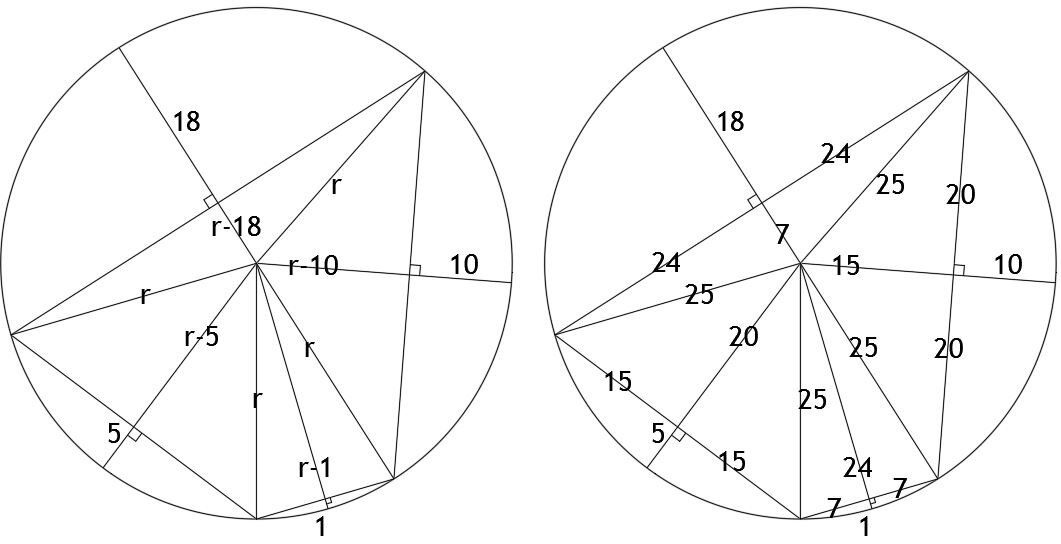Since both 8 and 188 divide evenly into 43992, the original sum of three fractions can be written as (5499+234+1)/43992. This further cancels to 61/468. So we have:
61/468 = 1/a + 1/b multiply each term by 468ab to eliminate denominators:
61ab = 468b + 468a multiply each term by 61, and move everything over to the left:
61x61ab – 61x468a – 61x468b = 0 add 468x468 to both sides:
61x61ab – 61x468a – 61x468b + 468x468 = 468x468
So far we just seem to be needlessly complicating it, but in fact we’ve been leading up to the next step, which is to factorise the left hand side:
(61a-468)x(61b-468) = 468x468
Now here’s the really clever bit. Since a and b have to be whole numbers, the remainder when divisible by 61 of (61a-468) or (61b-468) will remain the same regardless of the value of a and b. Their ‘modulo 61’ value will each be 20. The point of doing this is that however we factorise the right hand side, the two parts that correspond to (61a-468) and (61b-468) must also have a value of 20, modulo 61.
468x468 = 219024 = 2x2x2x2x3x3x3x3x13x13, so there are plenty of options for pairs of numbers that multiply to make 219024:
1x219024, 2x109512, 3x73008, 4x54756, 6x36504, 8x27378, 9x24336, 12x18252, 13x16848, 16x13689, 18x12168, 24x9126, 26x8424, 27x8112, 36x6084, 39x5616, 48x4563, 52x4212, 54x4056, 72x3042, 78x2808, 81x2704, 104x2106, 108x2028, 117x1872, 144x1521, 156x1404, 162x1352, 169x1296, 208x1053, 216x1014, 234x936, 312x702, 324x676, 338x648, 351x624, 432x507, 468x468,
However we are only interested in numbers that are equal to 20 mod 61. 81 is such a number, and its complement 2704 is the only other.
So we can let 61a-468=81 and 61b-468=2704 (or vice versa). These solve simply to a=9 and b=52 (or vice versa), and so these are the only solutions to the puzzle.
To conclude:
1/8 + 1/188 + 1/43992 = 1/9 + 1/52












